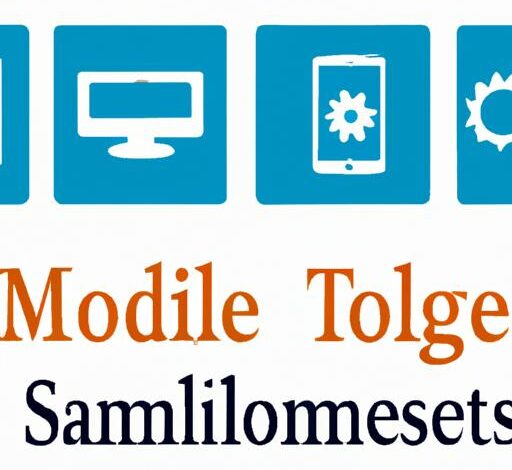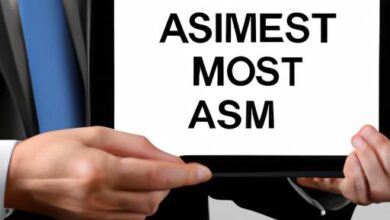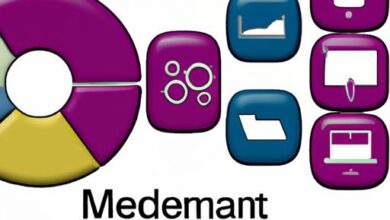Mobile Device Management Software: Streamlining Efficiency and Security for Businesses

In today’s fast-paced digital world, where mobile devices have become an integral part of our lives, managing and securing these devices is of paramount importance. This is where Mobile Device Management (MDM) software comes into play. But what exactly is MDM software, and why is it crucial for businesses?
A. Defining Mobile Device Management Software
mobile device management software refers to a comprehensive solution that enables businesses to efficiently manage and secure their fleet of mobile devices, such as smartphones, tablets, and laptops. It provides organizations with a centralized platform to streamline device configuration, deployment, security, and maintenance processes.
B. The Importance of Mobile Device Management Software
In a world where remote work and Bring Your Own Device (BYOD) policies are increasingly common, ensuring the security and productivity of mobile devices is vital for businesses. MDM software offers a range of benefits that address these concerns, including:
-
Enhanced Security: MDM software implements robust security measures such as data encryption, password policies, and remote device wiping to protect sensitive company information from unauthorized access or loss.
-
Simplified Device Deployment: With MDM software, businesses can effortlessly configure and deploy multiple devices simultaneously, saving valuable time and resources. It allows for seamless integration with existing systems and ensures consistency across devices.
-
Efficient Application Management: MDM software enables businesses to remotely manage and update applications on devices, ensuring that employees have access to the latest software versions. This helps enhance productivity and keeps devices up to date with the latest features and security patches.
-
Improved Monitoring and Control: MDM software offers comprehensive device tracking and inventory management capabilities, allowing businesses to monitor device usage, track location, and remotely control devices. This helps mitigate security risks and enables efficient troubleshooting.
By leveraging the power of MDM software, businesses can streamline their mobile device management processes, reduce operational costs, enhance security, and boost overall productivity. In the following sections, we will delve deeper into the features, selection criteria, and best practices associated with mobile device management software. So, let’s embark on this journey to discover how MDM software can revolutionize your business operations.
Features and Functionality of Mobile Device Management Software
In order to fully grasp the potential of mobile device management software (MDM), it is essential to understand its key features and functionality. MDM offers a comprehensive set of tools that empower businesses to efficiently manage their mobile devices while ensuring security and data protection. Let’s explore some of the noteworthy features that make MDM software an indispensable asset:
A. Remote Device Management and Control
One of the primary functionalities of MDM software is the ability to remotely manage and control devices. This includes tasks such as device configuration, software updates, and troubleshooting. With just a few clicks, administrators can remotely push configurations, install or remove applications, and even troubleshoot device issues, saving valuable time and resources.
B. Security and Data Protection Measures
Security is a top concern when it comes to managing mobile devices. MDM software addresses this by providing robust security measures. These include enforcing strong password policies, implementing data encryption, and enabling remote device wiping in case of loss or theft. MDM also offers features like containerization, which segregates personal and corporate data, ensuring that sensitive information remains secure.
C. Application Management and Deployment
Efficient application management is crucial for maintaining productivity and ensuring that employees have access to the right tools. MDM software allows administrators to remotely manage and deploy applications across devices, ensuring that employees always have the latest software versions. It also enables IT teams to blacklist or whitelist specific applications based on security or compliance requirements.
D. Device Tracking and Inventory Management
Tracking and managing devices can be a challenge, especially in large-scale deployments. MDM software simplifies this process by providing device tracking and inventory management capabilities. Administrators can monitor device location, track usage patterns, and maintain an up-to-date inventory of all devices within the organization. This enables efficient asset management and aids in identifying and addressing any security risks promptly.
Now that we have explored the features and functionality of MDM software, let’s dive into the crucial process of selecting the most suitable MDM solution for your business needs. In the next section, we will discuss the key factors to consider when choosing the right mobile device management software.
Top Mobile Device Management Software Solutions in the Market
In today’s vast landscape of mobile device management software solutions, it can be overwhelming to choose the right one for your business. To help you make an informed decision, let’s explore some of the top MDM software options available in the market:
A. Software A: Features, Pros, and Cons
Software A stands out with its comprehensive set of features and robust functionality. Some key features of Software A include:
-
Remote Device Management and Control: With Software A, businesses can remotely monitor, manage, and control their mobile devices from a centralized dashboard. This feature enables efficient device configuration, troubleshooting, and updates.
-
Enhanced Security Measures: Software A offers top-notch security protocols, including data encryption, secure network connectivity, and multi-factor authentication. These measures ensure that sensitive business data remains protected from unauthorized access.
-
Application Management and Deployment: Software A simplifies application management by allowing businesses to remotely install, update, and remove applications across multiple devices. This feature ensures that employees have access to the necessary tools and software.
Pros of Software A:
-
User-Friendly Interface: Software A boasts an intuitive and user-friendly interface, making it easy for businesses to navigate and utilize its features effectively.
-
Scalability: This MDM software provides scalability, allowing businesses to expand their device fleet without compromising performance or security.
Cons of Software A:
- Cost: While Software A offers extensive features, it may come with a higher price tag compared to other solutions in the market. Therefore, businesses on a tight budget may need to consider their financial constraints.
B. Software B: Features, Pros, and Cons
Software B differentiates itself with its unique set of features tailored to meet the needs of businesses. Here are some noteworthy features of Software B:
-
Remote Device Management and Control: Software B empowers businesses with remote control capabilities, enabling seamless device configuration, troubleshooting, and updates.
-
Advanced Security and Data Protection: This MDM software prioritizes security and offers robust measures, including encrypted data storage, secure network communication, and secure containerization, to safeguard sensitive business information.
-
Application Management and Deployment: Software B simplifies application management by allowing businesses to deploy, update, and remove applications remotely. This feature ensures that employees have access to the latest software versions.
Pros of Software B:
-
Customizable Policies: Software B provides businesses with the flexibility to create and enforce custom policies, ensuring compliance and security across devices.
-
Integration Capabilities: This MDM software seamlessly integrates with existing enterprise systems, allowing for easy adoption and integration into the existing IT infrastructure.
Cons of Software B:
- Learning Curve: While Software B offers extensive functionality, it may have a steeper learning curve compared to other solutions. Businesses should allocate sufficient time for training and onboarding.
C. Software C: Features, Pros, and Cons
Software C is renowned for its feature-rich offerings and comprehensive device management capabilities. Let’s explore its key features:
-
Remote Device Management and Control: Software C enables businesses to remotely manage and control their devices, simplifying device configuration, updates, and troubleshooting.
-
Robust Security Measures: Software C prioritizes security by implementing measures such as data encryption, password policies, and remote device wiping. These features ensure the protection of sensitive business data.
-
Application Management and Deployment: With Software C, businesses can efficiently manage and deploy applications across their device fleet, ensuring employees have the necessary tools to enhance productivity.
Pros of Software C:
-
Scalability: Software C offers scalability, allowing businesses to seamlessly manage their growing device fleet without compromising performance or security.
-
Reporting and Analytics: This MDM software provides detailed reports and analytics, allowing businesses to gain valuable insights into device usage, performance, and security metrics.
Cons of Software C:
- Complexity: Due to its extensive feature set, Software C may have a steeper learning curve. Businesses should allocate sufficient time for training and familiarization.
By evaluating the features, pros, and cons of these top MDM software solutions, businesses can make an informed decision based on their specific requirements and budgetary constraints. Remember, selecting the right MDM software is crucial for ensuring efficient device management, enhanced security, and seamless productivity within your organization.
Implementation and Best Practices for Mobile Device Management Software
Implementing mobile device management (MDM) software within your organization requires careful planning and consideration. To ensure a successful implementation and maximize the benefits of MDM software, it is essential to follow best practices. Let’s explore the key steps involved in implementing MDM software and the recommended practices for each stage.
A. Planning and Preparing for Implementation
Before diving into MDM software implementation, it is crucial to establish a clear plan. Start by identifying your organization’s specific needs and requirements. Consider factors such as the number of devices to be managed, the operating systems used, and the level of security required.
Next, evaluate different MDM software solutions available in the market. Look for solutions that align with your organization’s goals and offer the necessary features, scalability, and compatibility. Consider seeking recommendations from industry experts and reading user reviews to make an informed decision.
During the planning phase, define your implementation goals and set realistic timelines. Create a deployment strategy that outlines the steps involved, assigns responsibilities, and establishes communication channels for feedback and support.
B. Training and Educating Employees
To ensure a smooth transition and effective utilization of MDM software, it is vital to provide comprehensive training and education to your employees. Conduct training sessions to familiarize them with the features, functionalities, and security measures offered by the MDM software.
Emphasize the importance of following security protocols and adhering to device usage policies. Encourage employees to ask questions and provide ongoing support to address any concerns or difficulties they may encounter during the implementation process.
C. Developing Policies and Guidelines for Device Usage
Establishing clear policies and guidelines is critical in maintaining a secure and productive mobile device environment. Develop a comprehensive policy that covers areas such as acceptable use, device configuration, password requirements, and data protection measures.
Ensure that employees are aware of the policies and guidelines and provide regular reminders and updates as needed. Encourage compliance by emphasizing the benefits of adhering to these policies, such as improved security and streamlined workflows.
D. Regular Monitoring and Updates
MDM software implementation is not a one-time process; it requires ongoing monitoring and updates. Regularly review the performance and effectiveness of the MDM software and make necessary adjustments to optimize its usage.
Monitor device usage patterns, security incidents, and compliance with policies. Regularly update the MDM software to leverage new features, enhancements, and security patches. Stay informed about industry trends and updates to ensure your MDM software remains up to date and aligned with best practices.
By following these implementation best practices, you can effectively integrate MDM software into your organization, enhance security, streamline device management processes, and empower your employees to use mobile devices efficiently and securely.
Conclusion: Unleashing the Potential of Mobile Device Management Software
In the ever-evolving landscape of mobile technology, businesses cannot afford to overlook the significance of Mobile Device Management (MDM) software. By harnessing the power of MDM software, organizations can efficiently manage their fleet of mobile devices while ensuring robust security measures are in place.
Throughout this article, we have explored the definition and importance of MDM software, as well as the numerous benefits it offers to businesses. From streamlined device configuration and deployment to enhanced security measures and efficient application management, MDM software provides a comprehensive solution for businesses seeking to optimize their mobile device management processes.
Selecting the right MDM software is crucial. Businesses must carefully evaluate their specific needs and requirements, considering factors such as scalability, compatibility, security features, and user-friendliness. By making an informed decision, organizations can implement an MDM solution that seamlessly integrates with their existing systems and caters to their unique operational demands.
Implementing MDM software requires careful planning and consideration. Organizations should develop comprehensive policies and guidelines for device usage, provide adequate training to employees, and regularly monitor and update the software to stay ahead of emerging threats and technological advancements.
In conclusion, mobile device management software is no longer a luxury but a necessity for businesses in today’s mobile-driven world. It empowers organizations with the tools and capabilities to effectively manage and secure their mobile devices, ultimately leading to increased productivity, streamlined operations, and fortified data protection.
So, take the leap and embrace the power of mobile device management software. Unlock the potential of your business by effectively managing and securing your mobile devices, and stay ahead of the competition in this rapidly evolving digital landscape.
Conclusion: So above is the Mobile Device Management Software: Streamlining Efficiency and Security for Businesses article. Hopefully with this article you can help you in life, always follow and read our good articles on the website: investing.dulich3mien.vn



